Amazon Echo Input Review
Amazon Echo Input Review
A simple, small and well-designed speaker upgrade, the Amazon Echo Input brings Alexa to any speaker.
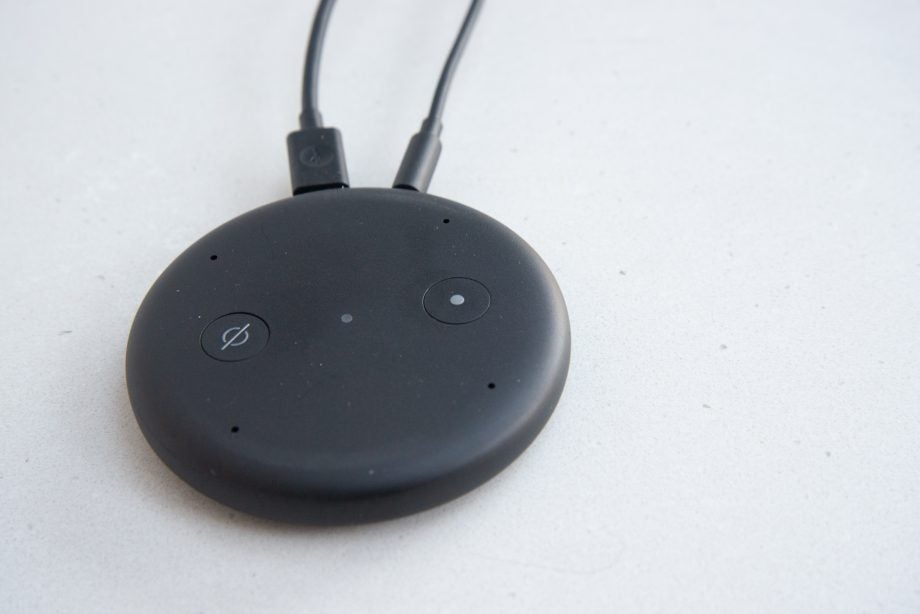
Verdict
Designed to be connected to an external speaker, the Echo Input is a cheap and easy way to make an existing dumb system smart. As well as a 3.5mm input, the Echo Input can also connect to a speaker via Bluetooth for a completely wire-free experience. However, Bluetooth connections are limited, plus you miss out on the drop-in or call features you get with the 3.5mm connection. For those unlikely to ever use a smart speaker solo, the Echo Input is a great choice for pairing with another speaker. However, if there's a chance you might want a standalone device then opt for the Echo Dot (3rd Gen) instead.
Pros
- Very small
- Great price
- Works with Bluetooth and wired speakers
Cons
- Not all features work over Bluetooth
Key Specifications
- Review Price: £34.99
- Microphone and activation controls
- Bluetooth
- 3.5mm ouput
- Amazon Alexa integrated
What is the Amazon Echo Input?
One of the main uses of the Echo Dot was to hook it up to an existing speaker, turning a dumb unit into a smart one. As useful a trick as this was, it was a waste of the speaker built into the Dot. The answer? The Amazon Echo Input.
This new Echo is basically an Echo Dot, only there’s no speaker, so you can just hook it up to an existing speaker using the 3.5mm or Bluetooth connections. If you’re unlikely to want the option to add a speaker at a later date, the Echo Input is a well-priced add-on.
Related: Which Amazon Echo should you buy?
Amazon Echo Input – Design and build quality
The Echo Input looks like the Echo Dot (3rd Gen) – with the top section missing. Measuring just 14mm high, with an 80mm diameter, this is the smallest Echo device available and easy enough to place near – or on – an existing speaker. Finished in matte plastic, and available in black or white, the Echo Input is neat and unobtrusive.
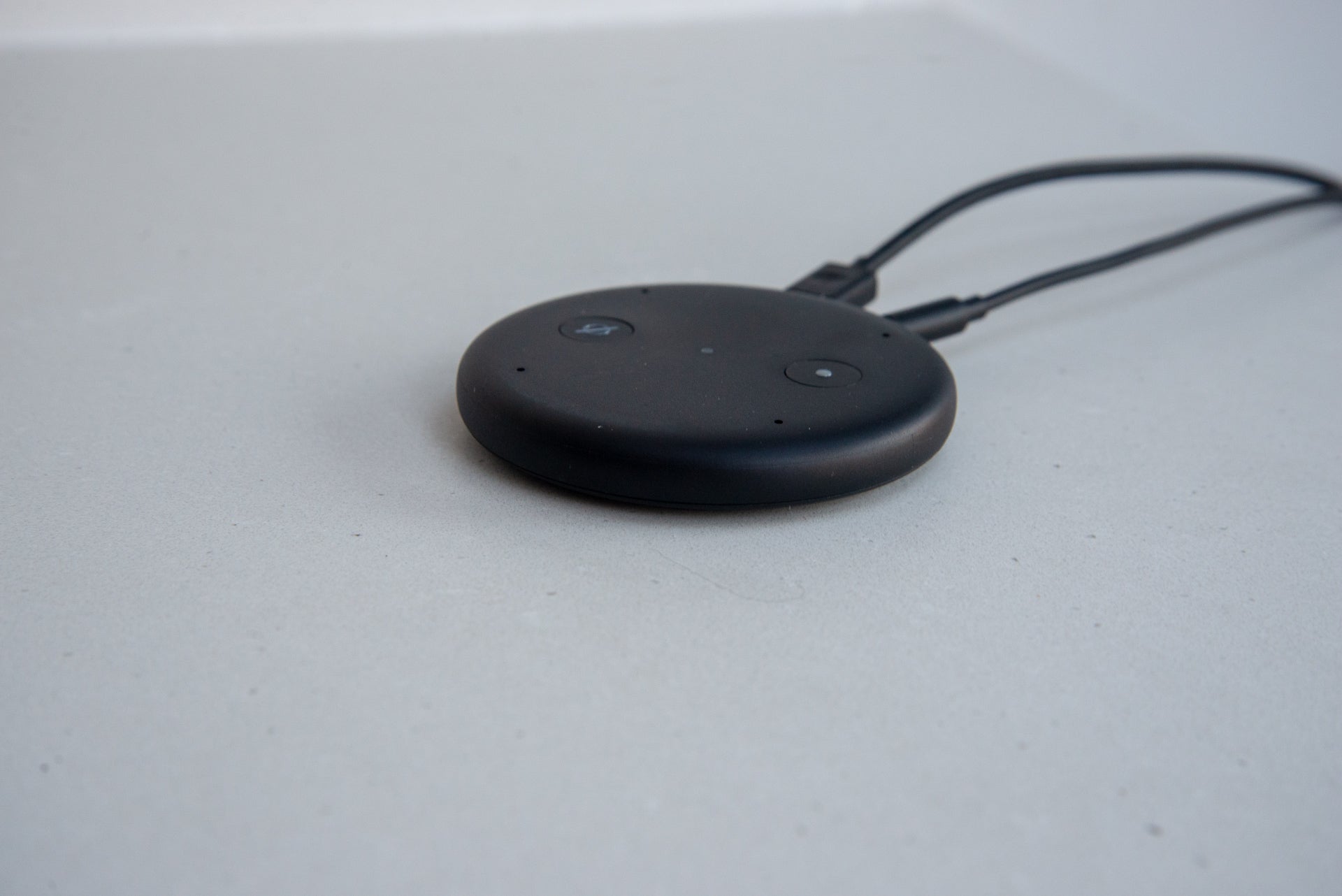
On its top you’ll find two buttons: one to mute the Echo Input and one to kick Alexa into life without having to say the wake word. The volume controls from the Echo Dot have gone. At the rear is a micro-USB input for power and a 3.5mm output, although you can also use Bluetooth with a few restrictions (see below).
Related: Amazon Prime Day 2019
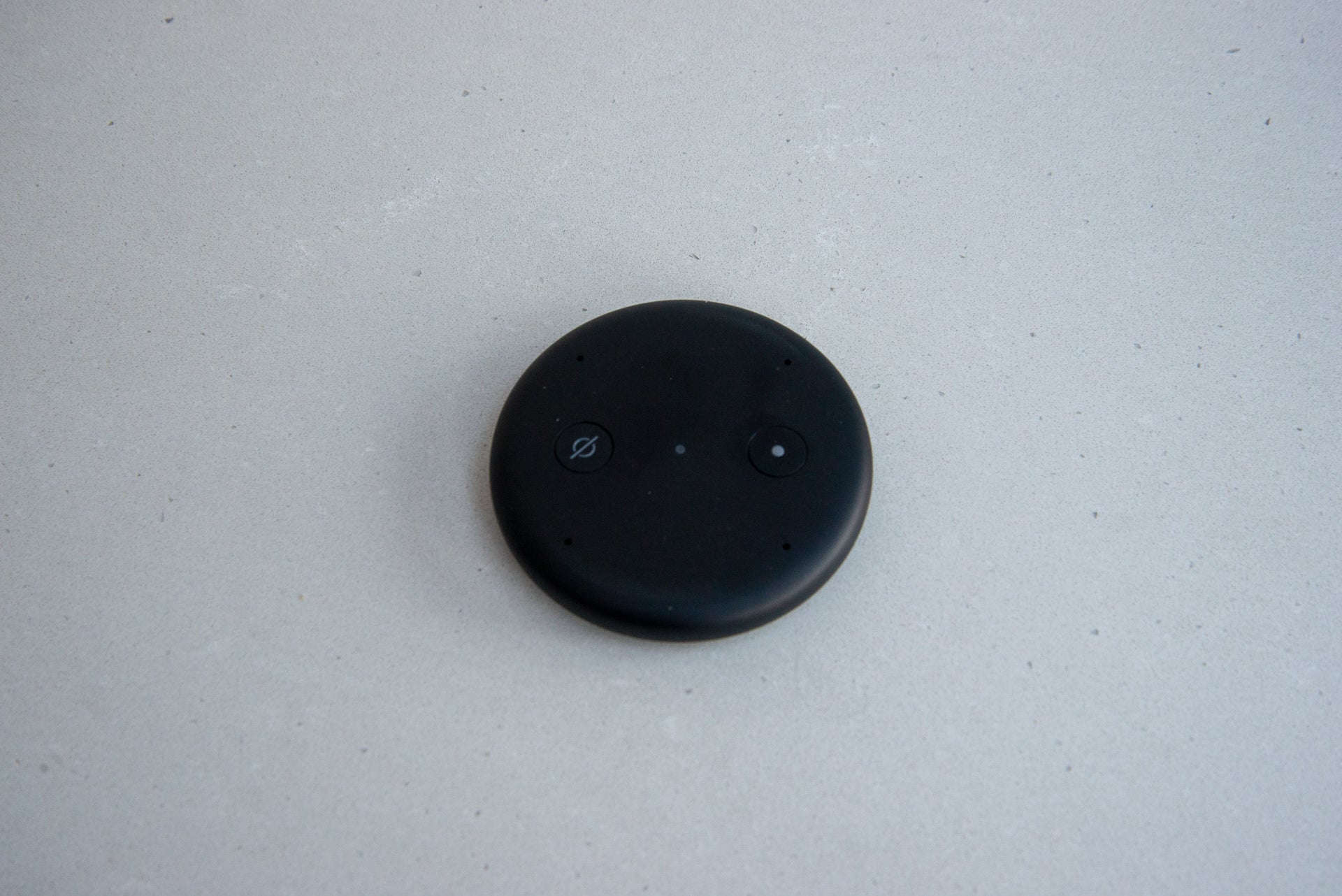
Amazon Echo Input – Features
Since the Amazon Echo Input uses Alexa, you get the same range of features as you do on other Echo devices. Since Alexa is constantly being upgraded and changed, you’ll find a review of the main Alexa features in my Amazon Alexa Guide; the basics and differences are covered here.
First, it’s worth talking about volume control. Although the Amazon Echo Input doesn’t have physical controls, you can use your voice to adjust the line output volume between one and 10. How this affects your speaker will depend on how loud the volume is set on that unit. For example, I found that if I turned down my speaker and set the Echo Input to volume four or lower, I couldn’t hear anything.
This isn’t really a negative point, but something to watch out for, as you have to take into account both the volume of the speaker that you’re using and the Echo Input’s volume, too. My advice is to set your speaker at a comfortable max volume with the Echo Input set to volume 10. Then, changing volume on the Echo Input will have the desired effect on your speaker.
As a general assistant, the Echo Input does a good job, with Alexa able to provide upcoming calendar appointments and find answers to simple problems. If Alexa can’t do what you want, there’s usually a skill available that will add the feature.
For smart home control, Alexa still rules with the largest range of supported devices. There are neat extra controls, too, such as being able to create Amazon Alexa Routines to take charge of multiple devices with a single command.
If you connect the Echo Input via Bluetooth then you can’t use the drop-in or voice-call features. However, these are only supported when you use a 3.5mm audio cable. This is a shame and big restriction. If you use either of these features, definitely go with the 3.5mm cable option.
As with the new Echo Dot, the Echo Input has four far-field microphones. Generally, the Input works well, even at distance. If the device is placed near a loud sound source – a TV, for example – then Alexa can struggle to understand you. However, the Input will dip the sound to the connected speaker, allowing you to make your command over any music you have playing.
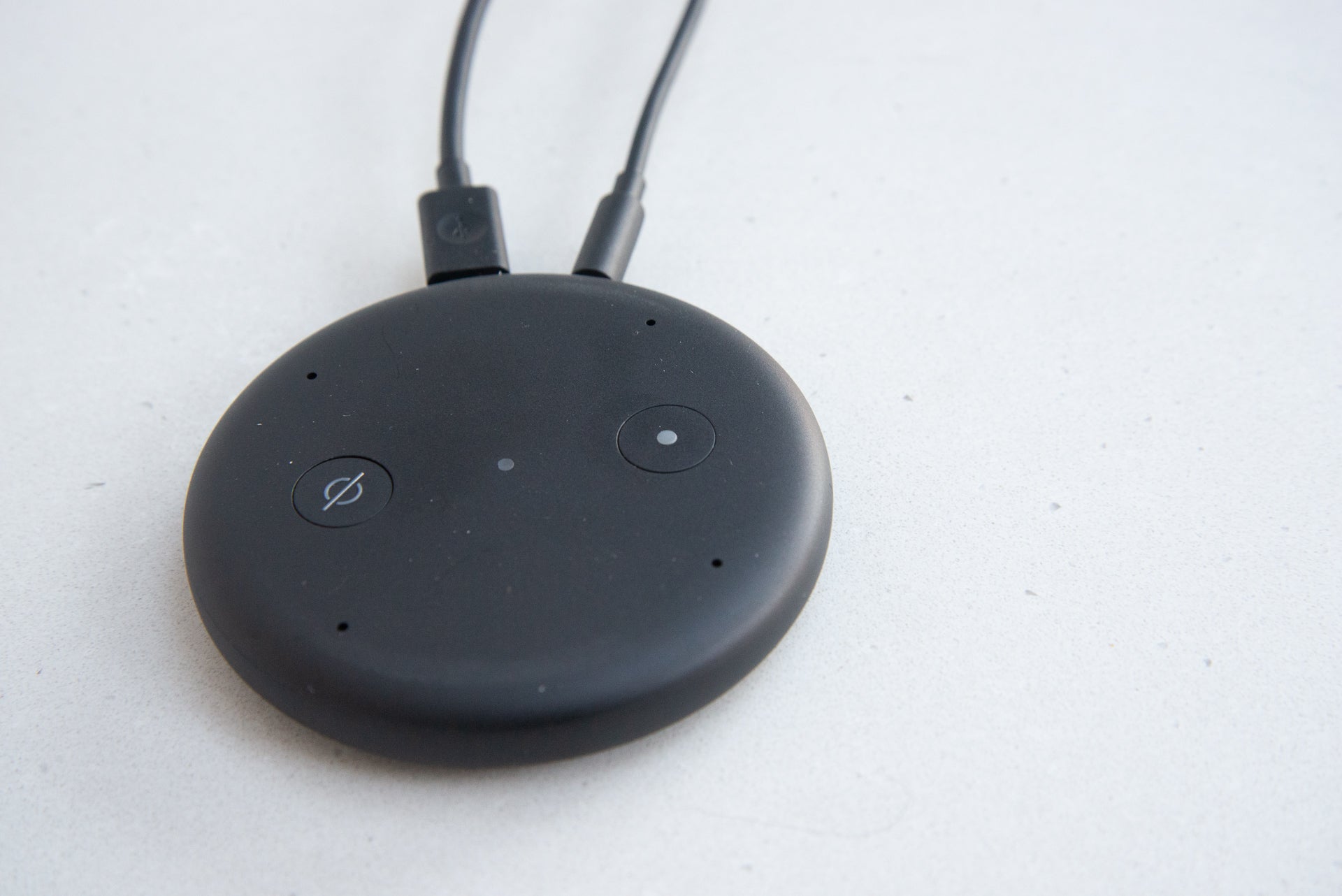
Amazon Echo Input – Sound quality
The sound quality is dependent on the speaker to which you hook up the Echo Input. Over Bluetooth, I found that the connection was clear, although I preferred the 3.5mm audio cable for higher-end speakers. It’s handy being able to play music using just your voice, turning an old dumb speaker into a smart one that responds to audible commands.
It’s worth pointing out that the Echo Input doesn’t support multiroom groups when paired with a Bluetooth speaker – that’s another reason you might want to use a 3.5mm audio connection.
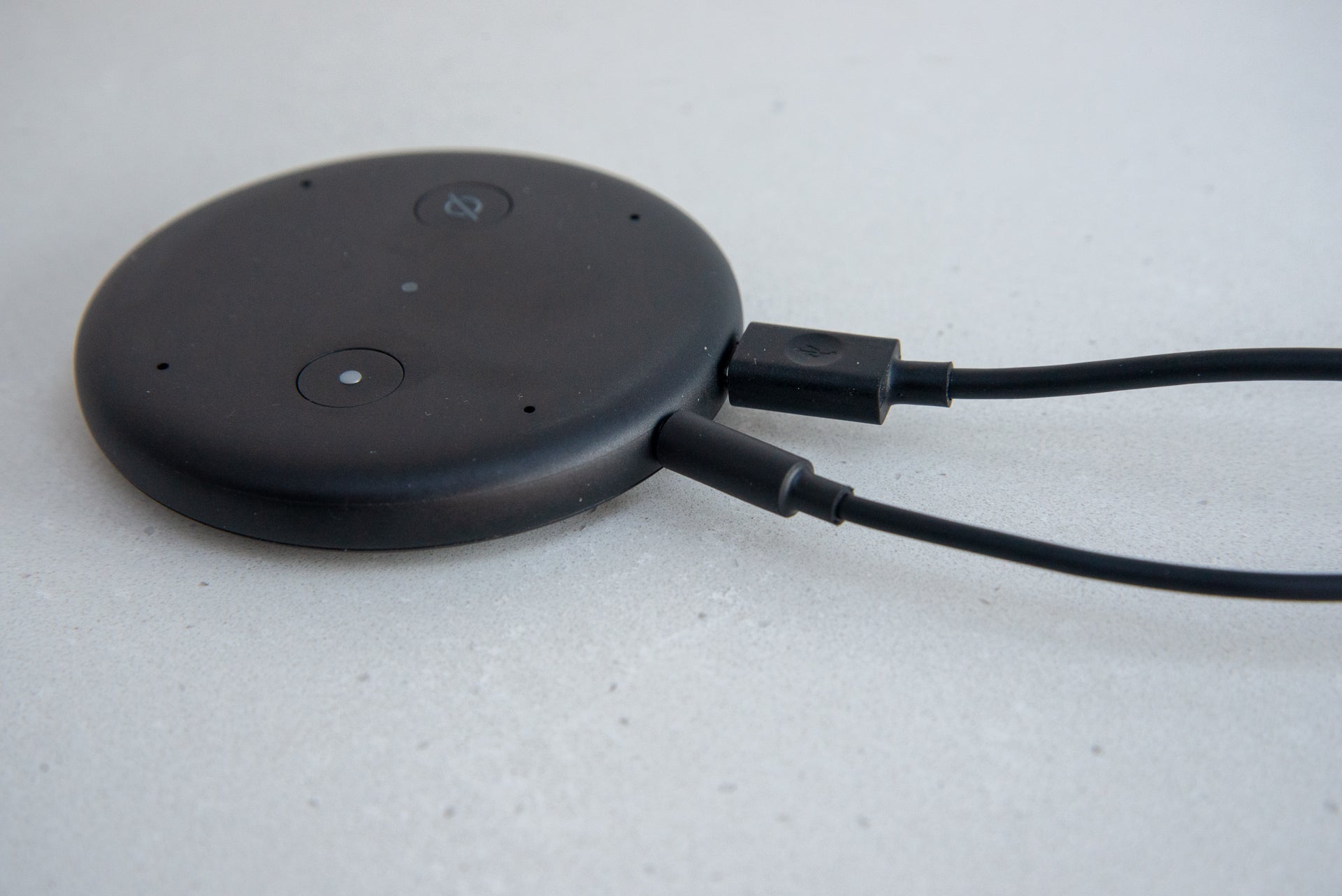
Although you can’t hook up the Echo Input to your Sonos speakers directly, you can use the Sonos skill to control playback if you want. Hopefully, Amazon will release a new skill that will enable the Echo Input to connect directly to a Sonos player over Wi-Fi.
Related: How to use Sonos with Alexa
The latest Alexa smart speakers support Amazon Echo stereo pair mode, where you can use one speaker for the left channel and one for the right. The Echo Input doesn’t support this mode, because Amazon can’t guarantee that you’ll have the Input connected to the same speaker types set to the same volume levels and audio settings. The Echo Sub isn’t supported – primarily, I believe, because it would be difficult to autotune the Sub as Amazon wouldn’t know the device to which the Echo Input was connected. Ultimately, the options aren’t what the Echo Input is about, so the lack of support isn’t an issue.
Related: Best Bluetooth speakers
Why buy the Amazon Echo Input?
If you have an old, high-quality speaker sitting around, the Echo Input makes for a good addition. Its small size and relative flexibility mean that the Input is a simple and unobtrusive way of upgrading an older device.
The Bluetooth restrictions – not supporting multiroom audio or drop-in – are a little frustrating, and may limit the Echo Input’s use in some situations – or force you to use the 3.5mm connection.
Ultimately, whether you need the Echo Input comes down to how you want to use it. If you’re thinking that you might need a standalone Echo device in the future, spend the extra money to buy the Echo Dot (3rd Gen). If you were primarily looking to upgrade an existing speaker then the Echo Input is a neater, cheaper alternative to the Echo Dot.


